 |
 |
 |
| |
Hepatocellular carcinoma development despite histological regression of
liver fibrosis following HCV cure (ANRS CirVir, Hepather, LICAVIR)
|
| |
| |
EASL 2024 June 5-8 Milan Italy
program abstract
Background and Aims: The risk of HCC development following HCV cure as a function of liver fibrosis regression is unknown. The aim of this study was to describe and analyze the dynamics of liver fibrosis assessed by both liver histology and noninvasive tests (NIT) at baseline and at the time of HCC occurrence several years after sustained virological response (SVR).
Method: Data were obtained in two prospective French multicenter cohorts of patients with HCV infection recruited since 2006 (ANRS CO22 Hepather and CO12 CirVir). Patients were regularly followed-up and when indicated included in HCC surveillance programs. The dynamics of NIT (Fib4, APRI and LSM) were evaluated in relation to HCC development and histological liver fibrosis in HCC patients was assessed.
Results: 8808 SVR patients (3500 with cirrhosis) were analyzed, among whom 298 (3.6%) HCC occurred during a 62-months follow-up. In the 3500 patients with cirrhosis, all baseline NIT tests (Fib4, APRI, LSM) were higher in patients who ultimately developed HCC. Except for Fib4 in patients who developed HCC, all NIT decreased significantly over time irrespective of subsequent HCC development with a maximum downward slope following antivirals implementation (all p<0.005). This temporal dynamic was similar for all tests irrespective of HCC development (p=0.91, p=0.29 and p=0.37, respectively). Joint modelling of association between the change in NIT and HCC showed that a unit decrease in APRI or Fib-4 scores at any time of follow up were associated with a decreased HCC risk (HR= 0.62 [0.57-0.69] and HR= 0.91 [ 0.90-0.93], both p<0.0001). Thirty-eight non-tumour liver biopsies specimen were analyzed at time of HCC diagnosis, 37/38 (98%) patients having F3 or F4 fibrosis scores before SVR. At time of HCC diagnosis, this proportion was 33/38 (86%) The analysis of fibrosis evolution showed that 7/38 (18%) HCC patients were considered as having liver fibrosis regression (F0: 1 patient, F1: 2 patients, F2: 2 patients, F3: 2 patients). More precisely, 4 patients had a one-point regression and 3 had more than one point of fibrosis regression. Overall, values of NIT tests in these patients suggested the presence of advanced liver fibrosis at the time of HCC.
Conclusion: HCC occurs despite histological fibrosis regression following HCV cure. The dynamics of NIT may not accurately reflect histological fibrosis changes and may not be sufficient to refine HCC surveillance strategy.
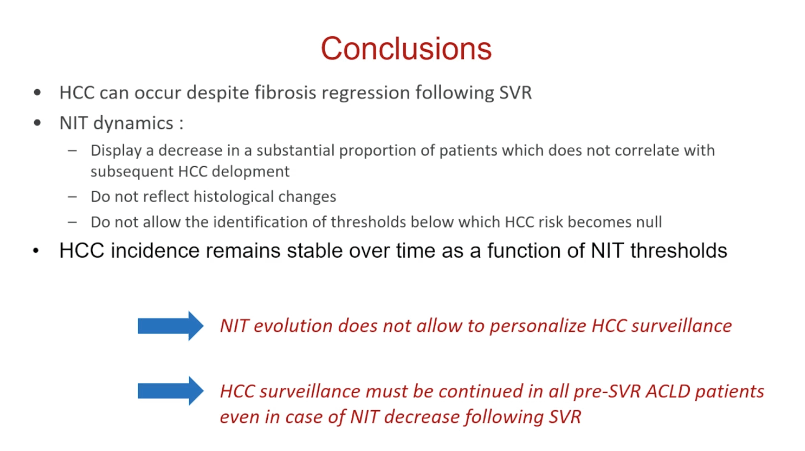
Advanced chronic liver disease (ACLD) includes advanced liver fibrosis and cirrhosis. It occurs when the amount of scar tissue (called fibrosis) builds up and affects the way the liver looks and functions. Fibrosis can be caused by many different liver diseases (for example metabolic liver disease, alcohol related liver disease, virus and autoimmune diseases).
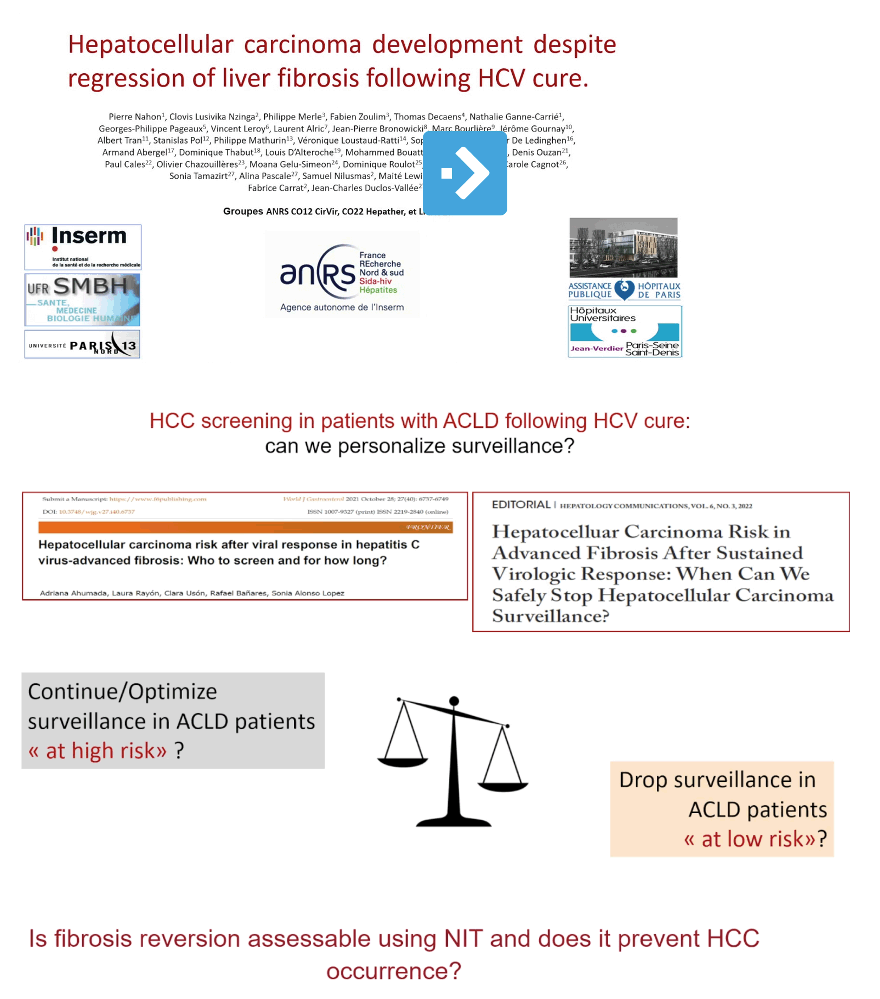

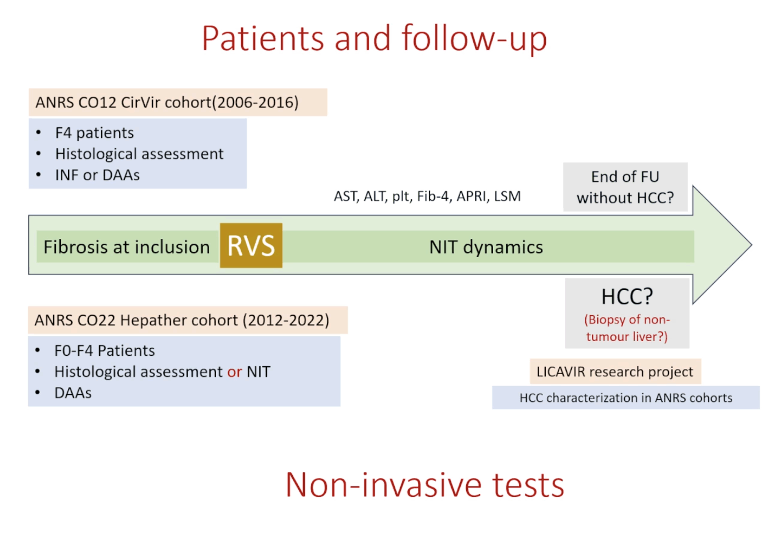
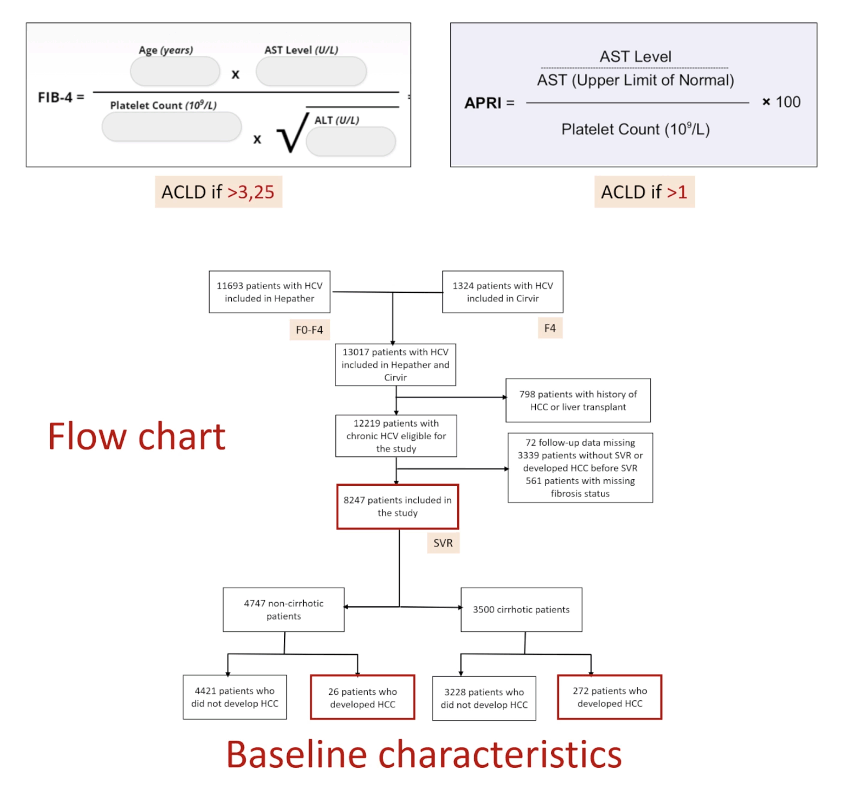
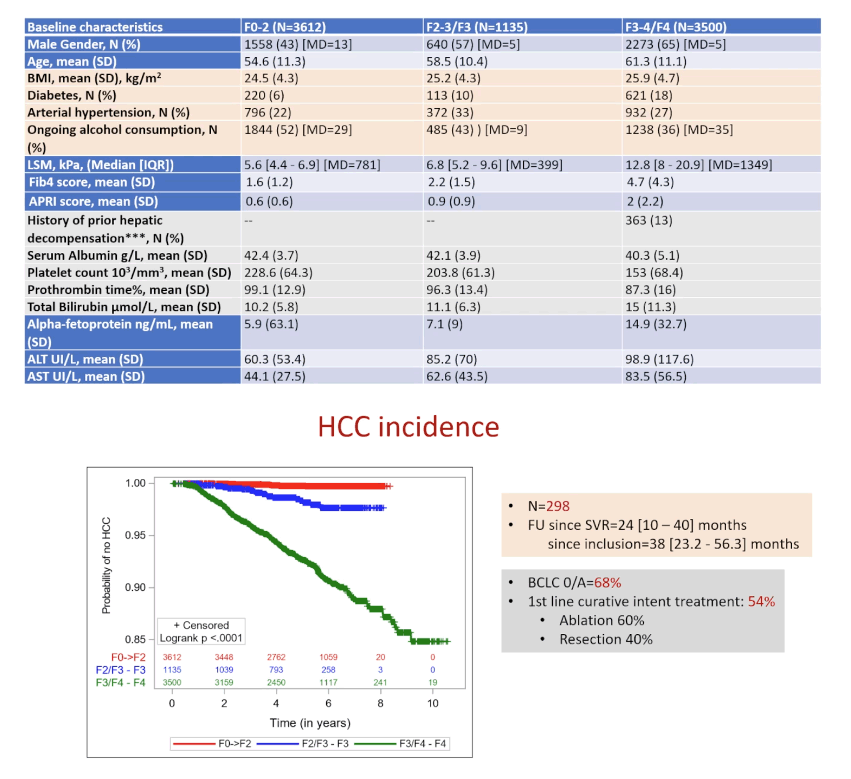
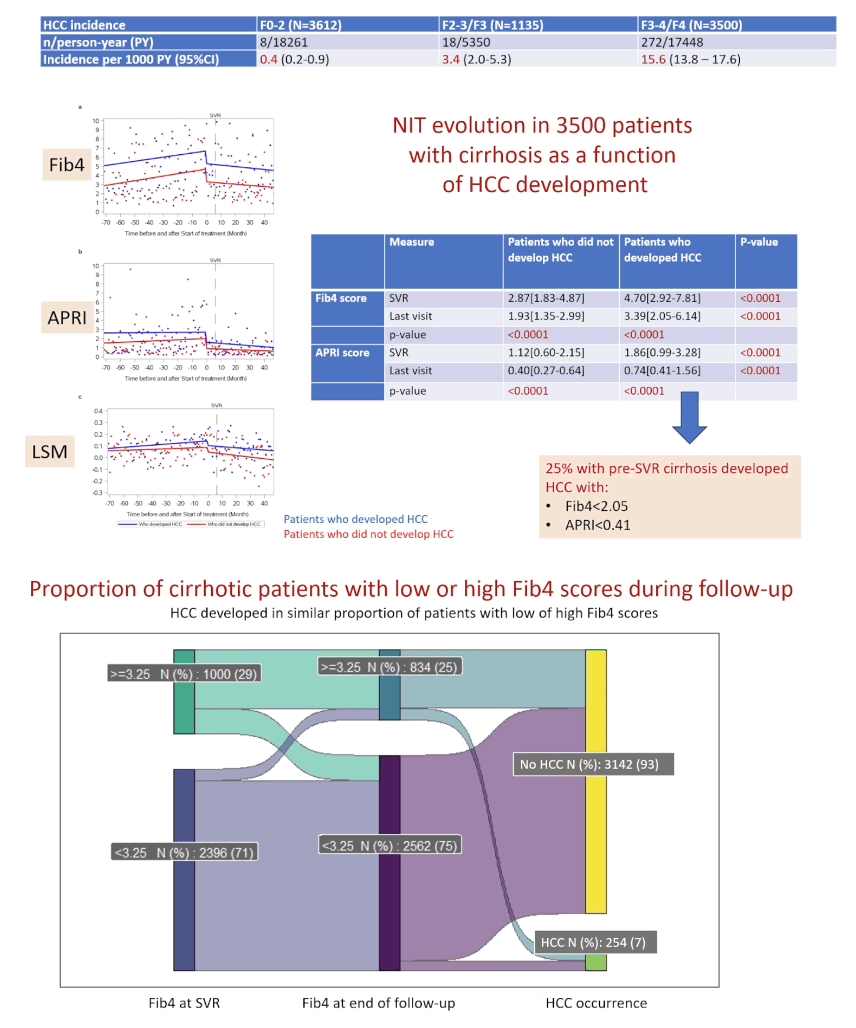
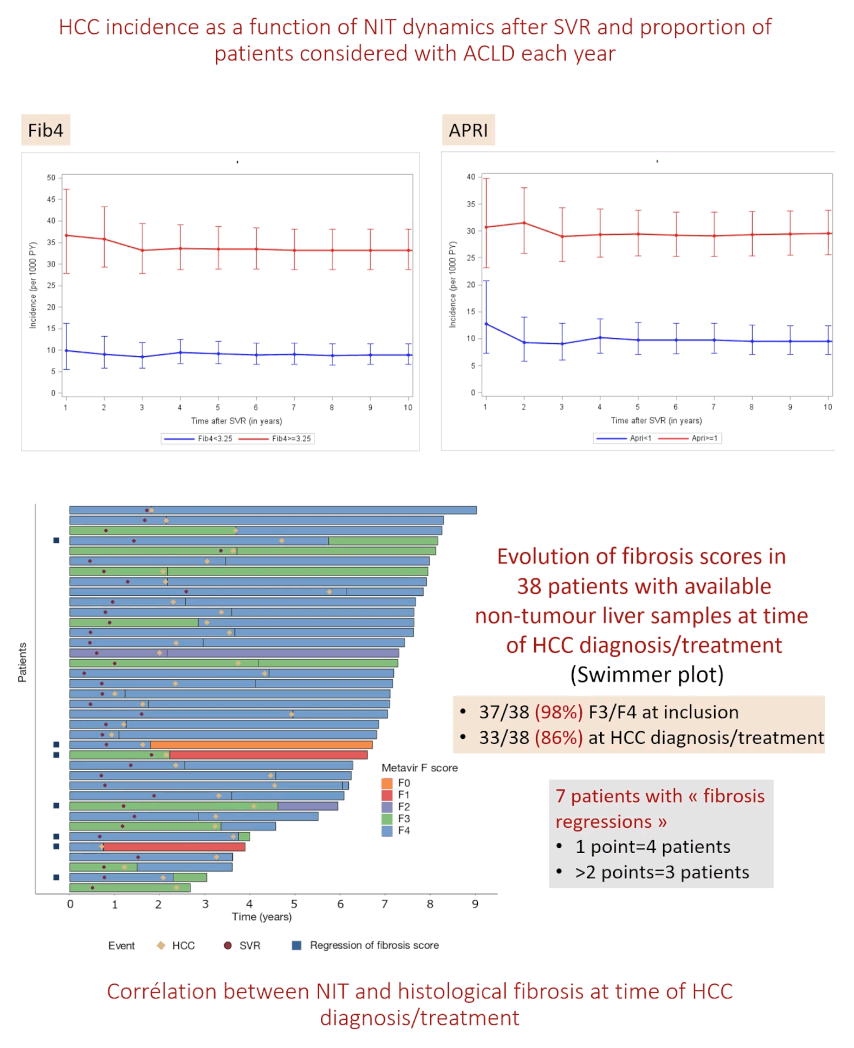
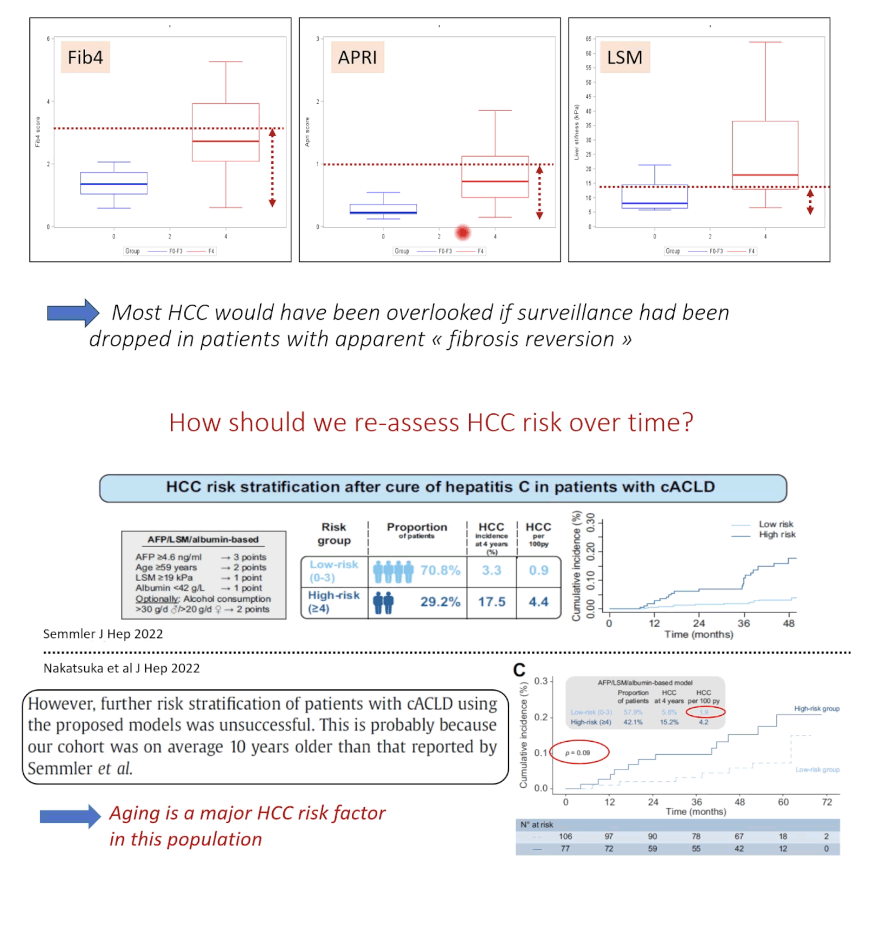
|
| |
|
 |
 |
|
|